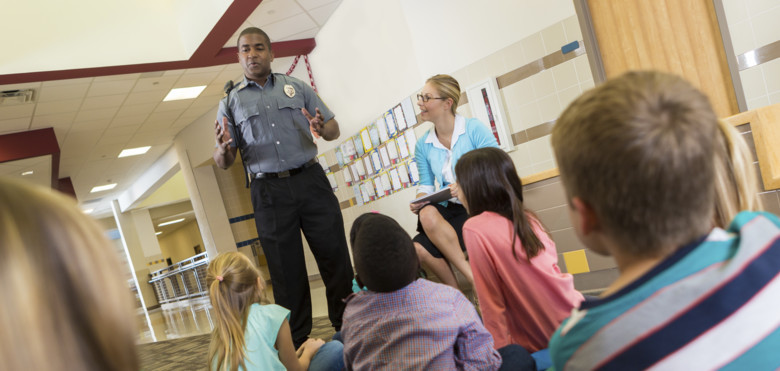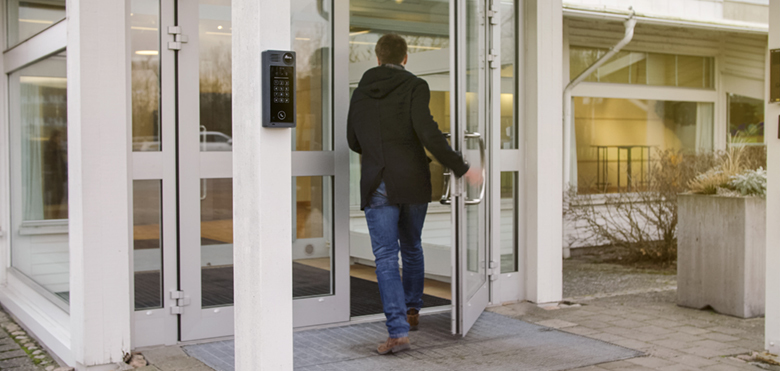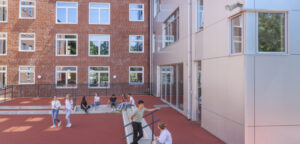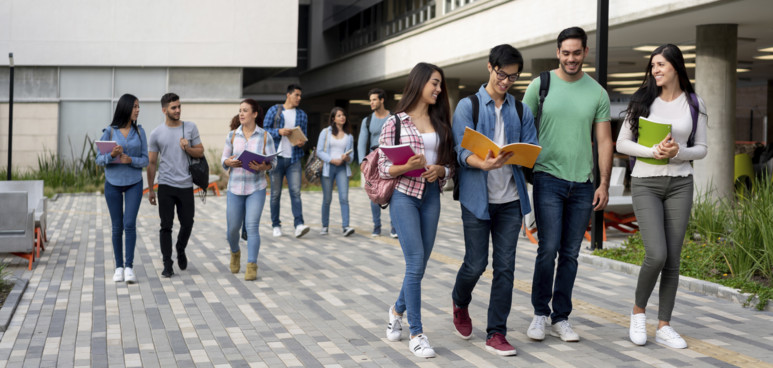Studying up on school safety
Every morning, an estimated 56 million children head to school across the United States, according to the Cybersecurity & Infrastructure Security Agency (CISA). Keeping these students safe is of the utmost importance for any school, but with increased threats and security challenges, it is important to consider how schools can improve their security measures.
Schools are turning to technology to mitigate and prevent security incidents from occurring. Today’s video technology – when integrated with video analytics, audio, and access control – has increasingly been implemented across the country to bolster security. For instance, federal data reveals that an estimated 43 percent of US public schools have a silent emergency button with a direct line to local police in case of an emergency, up from 29 percent five years ago. While this is certainly an improvement, it is crucial to focus our efforts on preventing these incidents from occurring in the first place.
Smarter cameras
The use of security cameras can be useful when it comes to incident prevention, and schools recognize this. According to the US’ National Center for Education Statistics, the percentage of public schools using security cameras increased from 61 percent in 2009-10 to 91 percent in 2019-20.
The visible presence of a camera alone can be a deterrent, but when combined with object classification, loitering or crossline video analytics, security measures can be enhanced. These integrations can actively alert security officers to an unauthorized presence, such as students gathering in “off-limit” areas during breaks, unwanted visitors loitering around school entrances, and even intruders at night.
Most schools have limited security resources, so cameras can be used as a “force multiplier” to extend 24/7 security coverage over a wide area, sending alerts and live video footage to a central monitoring station or to a security officer’s smartphone for follow-up. With pre-installed video analytics, cameras can be used to sense loitering, classify humans and vehicles and detect when an intruder crosses a digital line, sending real-time alerts to security personnel.
Controlling access
Keeping unwanted visitors and potential assailants out is one of the most effective ways to protect schools against serious threats. According to the above mentioned report, two-thirds of US public schools have now enhanced security by controlling access to external school grounds, while the proportion of schools that control access to individual school buildings reached a new high of 97 percent in 2019-20. By securing the perimeter, schools can create a fortress to protect both students and staff.
Network-based access control solutions offer significant cost savings over the traditional “lock and key” approach by eliminating the need to re-key doors in the event of lost, stolen or misplaced keys. Access control technology can also be used to reduce theft, vandalism and accidents in key locations inside the school:
- Server and utility rooms where vital infrastructure is housed
- School laboratories containing expensive equipment and dangerous chemicals
- Computer rooms, media centers, and even front offices or secure vestibules
Access can be permission-based, but it can also be scheduled – which is particularly useful for managing after-school activities. For example, by granting scheduled access to coaches and teams who may be using the gymnasium in the evening, there is no need to search for an open door or custodian, and no need to compromise personal safety by keeping doors propped open for late arrivals.
IP-based network door controllers also integrate with video cameras which can be configured to trigger live or recorded images of all access attempts – both successful and, even more importantly, unsuccessful entry attempts.
Remote visitor screening
While keeping school entrance and exit doors locked during the day provides an extra layer of physical security, it also makes it challenging to efficiently manage visitors. The steady stream of parents picking up a sick child or meeting with a teacher, the food deliveries to prepare the day’s lunch, the guest speaker for today’s assembly, and a whole host of unscheduled – and possibly unwanted – visitors. And that’s just during school hours. Connected intercoms and network door stations installed at school entrances can incorporate both audio and visual surveillance. This technology can provide clear two-way audio communication and high-resolution video of school visitors no matter where school resources are located.
A better – and safer – alternative to dispatching a staff member to physically open the door, school administrators can grant visitor access remotely from the front office or even from home via their smartphone.
Getting the message out
Intelligent audio solutions can be an effective preventative addition to an integrated security solution. For example, if a camera detects an intruder on school grounds at night it can trigger a pre-recorded message or alert a remote security resource to issue a verbal warning, thus potentially deterring criminal activity such as theft or vandalism. Network speakers also allow for school resources to broadcast important messages from anywhere via their smartphone – either broadly to the entire school, playground and parking lot, or to an individual classroom or zone.
While network audio is most commonly used by schools to facilitate announcements for inclement weather, impromptu school assemblies, or other school-wide messages, connected audio solutions can also, crucially, be used to assist school resource officers in preventing security incidents.
Technology: one aspect of comprehensive school safety
Technology is an ever-evolving, crucial aspect in any school safety solution. In addition to the technology itself, there are several groups of individuals within any education environment who leverage it to build smarter, safer schools. These groups include but are not limited to:
- Educators
- Mental health professionals
- Law enforcement
- Parents
These communities are all working proactively to develop a safe, inclusive environment, developing outreach programs and providing resources for troubled students. Initiatives like these, coupled with the latest advances in security technology, are crucial to driving more positive outcomes and enhancing school safety.
Read this customer story from Knoch School District in Pennsylvania, USA, to learn how different technology solutions can be deployed:




